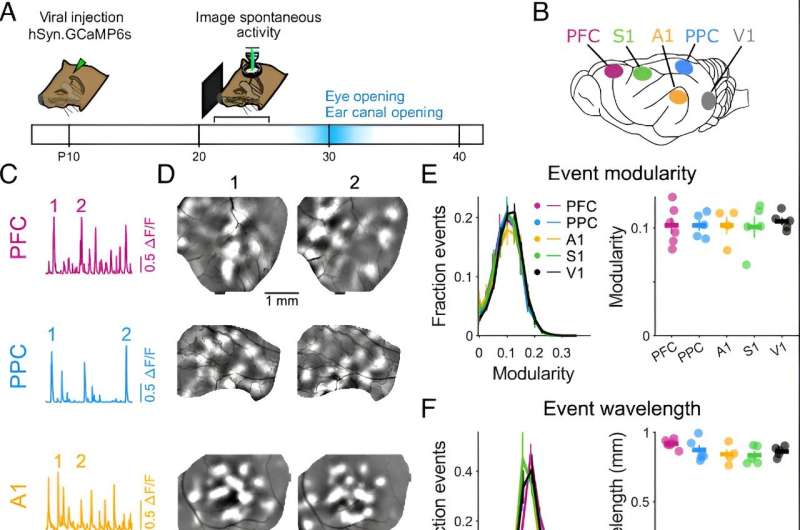This article has been reviewed according to Science X's editorial process and policies. Editors have highlighted the following attributes while ensuring the content's credibility:
fact-checked
peer-reviewed publication
trusted source
proofread
Study reveals shared blueprint in brain development across different functional areas

In a new study published in Proceedings of the National Academy of Sciences, researchers from the University of Minnesota Medical School have investigated brain development to understand how different areas of the brain become specialized in handling information such as vision, sound, touch and planning.
The study found that different areas of the brain start with a similar organization rather than already being specialized in early development. This suggests that the brain might use a single shared blueprint to guide early development.
"Throughout life, the brain continually builds on the foundations set earlier in development. This strong similarity in early development across very different areas of the brain suggests that neurodevelopmental disorders—such as autism or schizophrenia, which affect many different parts of the nervous system—may act similarly across these different brain areas," said Gordon Smith, Ph.D., assistant professor at the U of M Medical School and principal investigator on the study. Dr. Smith is also a member of the Medical Discovery Team on Optical Imaging and Brain Science.
In collaboration with the Frankfurt Institute of Advanced Studies, the research team used advanced optical imaging techniques to measure spontaneous activity in diverse brain areas. They found that even in different parts of the brain—such as those responsible for hearing, seeing and feeling touch—as well as in areas linked to thinking in both the front and back part of the brain, the activity in networks of brain cells showed a very similar organization during early development.
Researchers discovered that nerve cells in these areas work together in small, synchronized groups. These groups are part of bigger networks that cover millimeters in each part of the brain.
"This type of organization has long been a hallmark of visual brain areas, but finding it in other regions—especially in non-sensory regions like the prefrontal cortex—was a surprise," said Dr. Smith.
Ongoing research will examine other brain regions at different stages of development to determine how the common blueprint identified in this study changes over time.
More information: Nathaniel J. Powell et al, Common modular architecture across diverse cortical areas in early development, Proceedings of the National Academy of Sciences (2024). DOI: 10.1073/pnas.2313743121




















